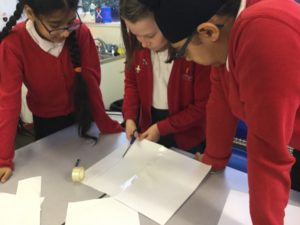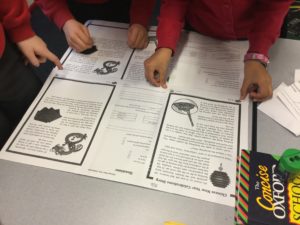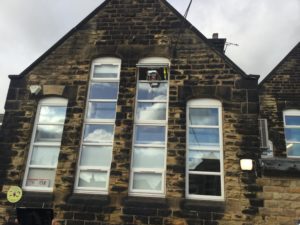To test the science behind the parachute slowing us down when running, we set up an experiment involving parachutes, eggs and a window.
Year 5 worked in groups to make three different parachute sizes. We wanted to investigate which parachute had the most air resistance and therefore slow the egg’s fall the most to prevent it from breaking. It was important to keep everything else the same so that we could tell that it was definitely the parachute size affecting the results.



Next, it was the moment of truth. We waited patiently below to observe the speed of the parachute’s fall and whether or not our eggs cracked. A slower fall would mean more air resistance and, ultimately, an egg in less danger!

We found that the larger parachutes fell slower and had more success protecting their eggs. Smaller parachutes fell very quickly to the ground. This means larger parachutes have a greater air resistance and smaller parachutes have less air resistance.
